Dreams and their presentation on film have fascinated directors since the very inception of cinema. Georges Méliès’s film La Lune à un mètre (English title The Astronomer’s Dream) (1898) presents the fantastical dream of an astronomer who dreams about the Moon, and Buster Keaton’s Sherlock Jr. (1924) has a dream sequence where the main character leaves his body in a dream and climbs into a film that is playing in a movie theatre. The Wizard of Oz (1939)’s story is a colourful dream of ordinary girl Dorothy Gale, living in Kansas with her aunt and uncle, and nightmare-induced horror is at the very core of highly successful film A Nightmare on Elm Street (1984). Inside (2023), Vasilis Katsoupis’s recent film debut about a thief locked inside one high-rise apartment of a wealthy art collector, has an intense dream sequence whose components may or may not be key to solving some of the film’s mysterious aspects, and this is what dream sequences in cinema often aim to do: ascertain the truth behind some confusing event, solve a mystery or underlying conflict, or reveal the protagonist’s deepest hidden fears or aspirations.
While such films as Akira Kurosawa’s Dreams (1990), David Lynch’s Mulholland Drive (2001) and Christopher Nolan’s Inception (2010) could be seen as films whose action takes place almost exclusively in the realm of dreams, other films feature only one or a few dream sequences. Below are seven such films that feature memorable, powerfully-presented dream sequences, and the curious thing to note is that the directors mentioned below were all probably influenced by each other, including Aronofsky by the work of Polanski, and the latter by Buñuel’s surrealism.
8½ (1963)
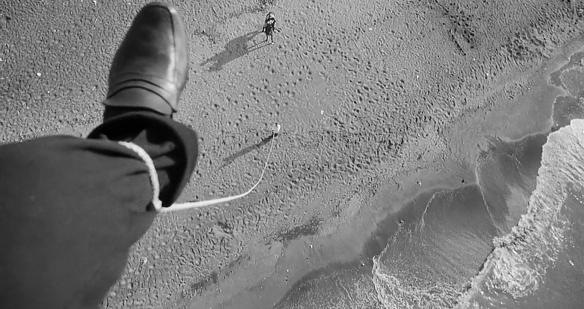
Federico Fellini’s masterpiece follows Guido Anselmi (Marcello Mastroianni), a film director trying in vain to come up with new ideas for a new film. Guido starts seeking inspiration in the realms of memory and fantasy as his past and relationship issues resurface. The film’s opening sequence shows Guido’s dream where he is first trapped in his car in a traffic jam and then flies over Italy. As he is flying, his leg is shown tied by a rope that extends all the way to earth, where another man is shown holding it like a balloon. This sequence underscores the feeling of stifling anxiety and uncertainty that the main character faces with regards to the burden of having to come up with another successful film, while Fellini showcases some of most common content of dreams—feeling claustrophobic and flying. Guido’s feeling of lacking control transpires in his dream of him being tied and manipulated like a puppet. There are many other dream-like sequences in 8½, including Guido’s harem fantasy, and dream-like evocations are also present in another personal film of Fellini —Amarcord (1973).
Brazil (1985)
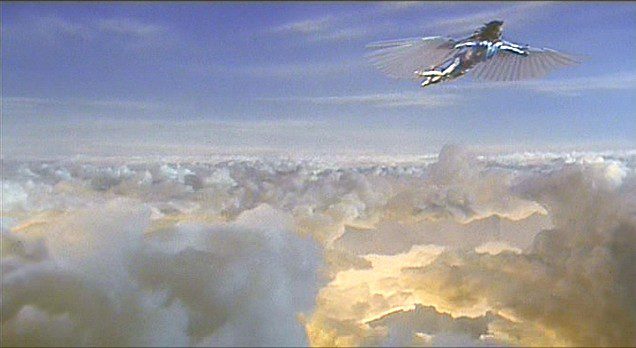
Terry Gilliam (12 Monkeys (1995), The Man Who Killed Don Quixote (2018)) is one of the most artistically inclined film-makers working today. His dystopian film Brazil also has a distinctive surreal style and incorporates a number of dream sequences. The story is about Sam Lowry (Jonathan Pryce), a government employee living in a totalitarian, bureaucratic regime, where people are obsessed with senseless consumerism and prolonging their youthful looks. The film’s dream sequences show Sam as a knight in shining armour battling dark forces and coming out triumphant. Visually rich and fill of action, these sequences represent Sam’s wishful-thinking (in his dream, Sam is a hero who saves a beautiful woman), as well as symbolically stand for Sam’s daily grim reality: for example, masked creatures in Sam’s dream may stand for his governmental co-workers who mindlessly follow orders at the Ministry of Information.
Rosemary’s Baby (1968)
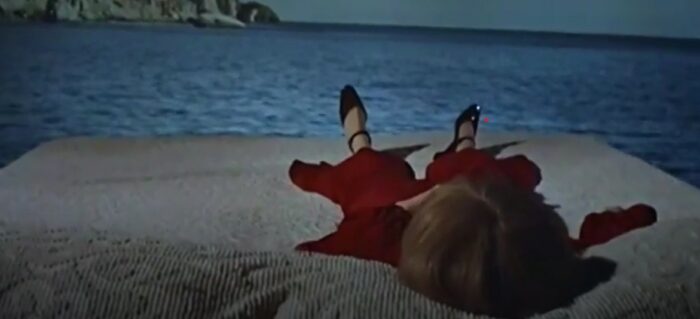
Based on the novel of the same level by Ira Levin, Rosemary’s Baby is an atmospheric psychological horror film about Guy and Rosemary Woodhouse (John Cassavetes and Mia Farrow), a couple who has just moved into upscale apartment complex the Bramford in New York City. They soon notice that their nosy and too accommodating next-door neighbours may have sinister intentions, especially when Rosemary notices that she is pregnant. The film’s well-crafted dream sequence shows Rosemary on a ship full of strangers and then descending to “down below”. It ends up being both realistic and highly disturbing, mingling reality, drug-induced hallucinations and dream-world, and some handheld shots and the sound of the ticking clock make the scenes feel even more unsettling. There are many dream-like images in Polanski’s film Repulsion (1965), too.
Spellbound (1945)

Alfred Hitchcock’s Spellbound, based on the 1927 novel titled The House of Dr. Edwardes, puts psychoanalysis at the heart of its plot that tells of the arrival of Dr. Anthony Edwardes (Gregory Peck) into a psychiatric institution, and the romance that starts to blossom between the newcomer and psychoanalyst Dr. Constance Petersen (Ingrid Bergman). It turns out, though, that Dr. Edwardes is amnesiac, and the key to his true identity and what brought him to the institution in the first place may reside in his dreams and spontaneous ramblings. The distinguishing characteristic of Spellbound’s famous dream sequence is that the setting was designed by no other than Spanish surrealist artist Salvador Dalí. It shows Peck’s character telling about his dream that involves a strange-looking gambling house, and a man with a wheel on a rooftop. Even after so many decades, this dream sequence still simply spellbinds with its set design beauty, visual power, and eerie suggestions. It is said that Hitchcock and Dalí’s original vision for this sequence was even more hallucinatory, involving ants and a statue cracking, which, sadly, never materialised. Moreover, Spellbound is not Hitchcock’s only foray into the realm of dreams as the director’s Vertigo (1958) also had a memorable dream sequence.
Los Olvidados (1950)

Luis Buñuel’s Los Olvidados (1950) is a film about a group of delinquent children living in a poor area of Mexico. The leader of their gang is ruthless older teenager El Jaibo (Roberto Cobo), who has recently escaped a correctional facility, and we follow the tragic descent to criminality of younger boy Pedro (Alfonso Mejía Silva), who sets his mind to follow an honest way of life, but whose connection to the gang, and especially to El Jaibo, get the better of him. The film’s dream sequence is not usually found in similar film lists, and this omission is hard to understand. Buñuel’s slow-motion dream sequence shows Pedro’s dream in which the boy rises from his bed, living his corporal body behind, and sees first a chicken to be slaughtered in the air, then blood-covered El Jaibo under his bed, and, finally, his ghostly mother. These scenes emphasise Pedro’s continuous trauma and feelings of guilt regarding his association with El Jaibo and the latter’s murderous action. The sequence makes the audience glimpse into Pedro’s subconscious thoughts and internal feelings, as Buñuel challenges the neo-realist cinematic tradition by injecting into his film a hefty dose of intense surrealism, producing an unsettling film segment that was ahead of its time and could not but leave a lasting impression.
Dead of Night (1945)
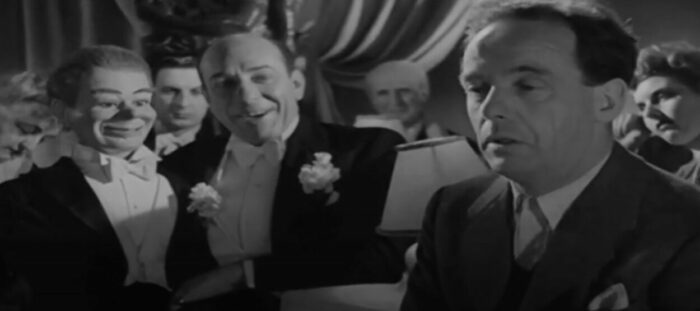
This film comprises an anthology of short films revolving around eerie coincidences, ghostly encounters, and terrifying premonitions. Basil Dearden, Alberto Cavalcanti, Charles Crichton, and Robert Hamer are the directors involved in this series of stories based on the works of such authors as H.G. Wells and John Baines. The film starts with one architect, Walter Craig (Mervyn Johns), arriving at the home of his client, Elliot Foley (Roland Culver) and claiming that he had dreamt of the people currently present in Foley’s house before. Each person present in the room then starts to recount unusual stories that happened to them and that made them believe in the supernatural. For example, there is a woman who buys a mirror for her fiancé without knowing its dark history, which soon lets itself known, and a teenage girl makes an acquaintance with a strange boy whose identity prove terrifying. The final story titled “Ventriloquist’s Dummy” is probably the strongest in the anthology, where ventriloquist (Michael Redgrave) is charged with murder which may or may not have involved the actions of his stage dummy Hugo. The final sequence of the film is Craig‘s hallucinatory dream involving all of the stories mentioned, culminating in one thought-provoking ending.
Black Swan (2010)
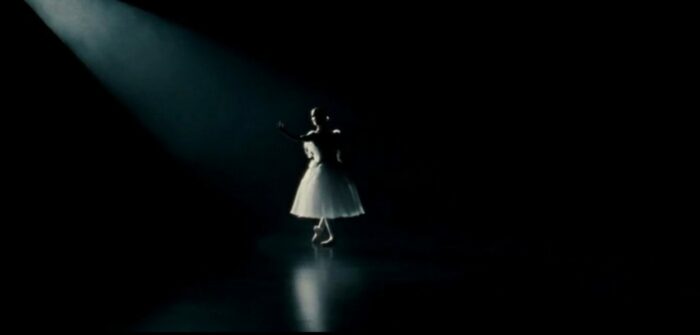
Black Swan’s impressive opening dream sequence shows Nina (Natalie Portman) dancing the role of Princess Odette in the production of Tchaikovsky’s ballet Swan Lake. As the dances, she encounters the evil sorcerer Von Rothbart, who casts a spell on her, turning her into a white swan. This is Nina’s most coveted desire—to be chosen in the lead role of this famous ballet since she is at present only one of many promising young ballerinas at the New York City Ballet company. The dream sequence, which could be interpreted as either Nina’s dream or day-dream, sets the tone for the rest of Aronofsky’s well-crafted psychological horror film, which involves the metaphorical and literal battle between two opposing forces. It will show Nina’s arduous metamorphosis into one confident, sexually-liberated and mature woman since only she could embody convincingly innocent Odette’s counterpart—black swan Odile.



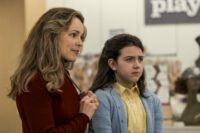
I thought, She’d better have “Los Olvidados” on that list. And you do!